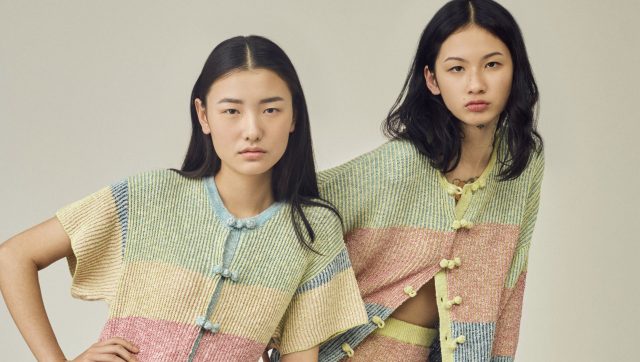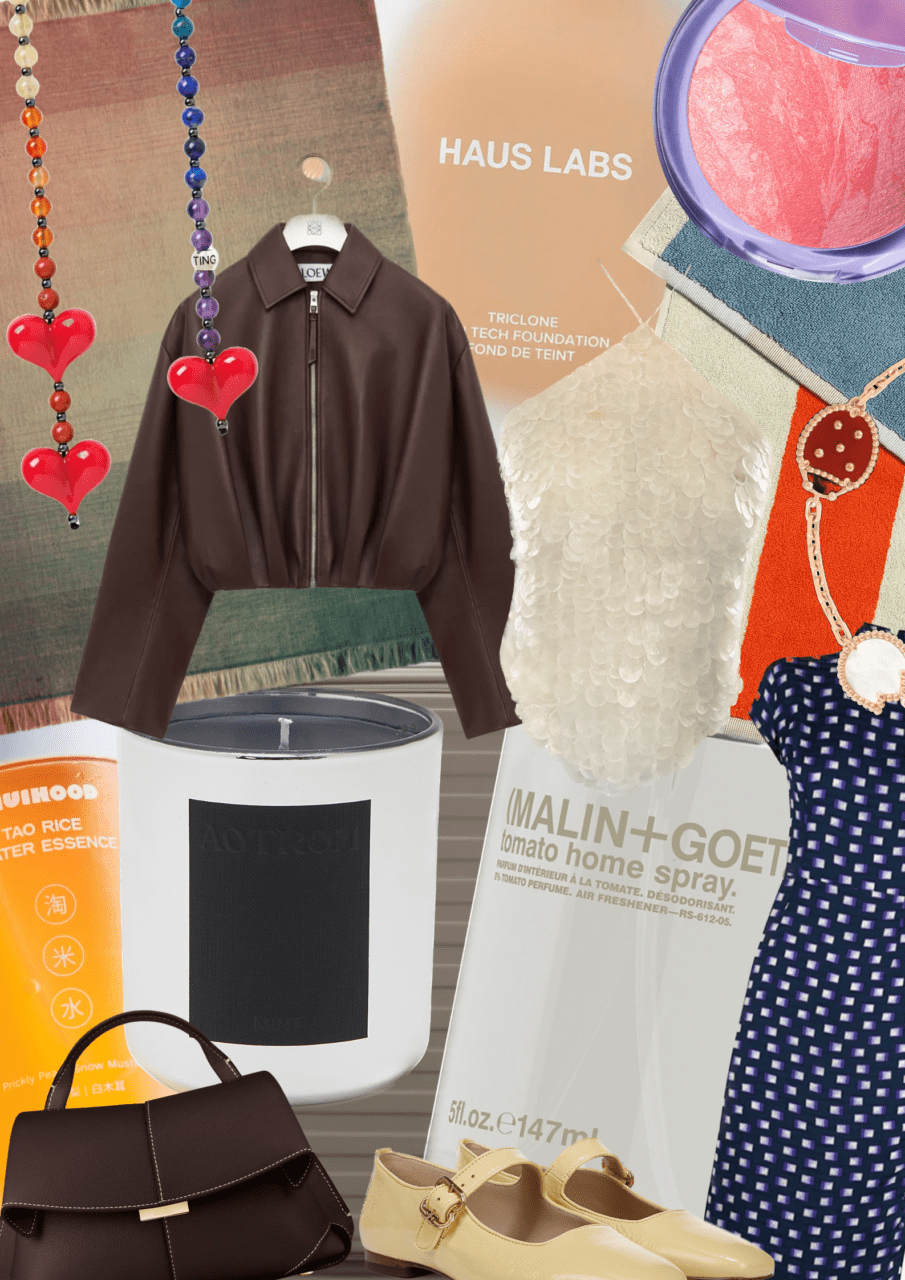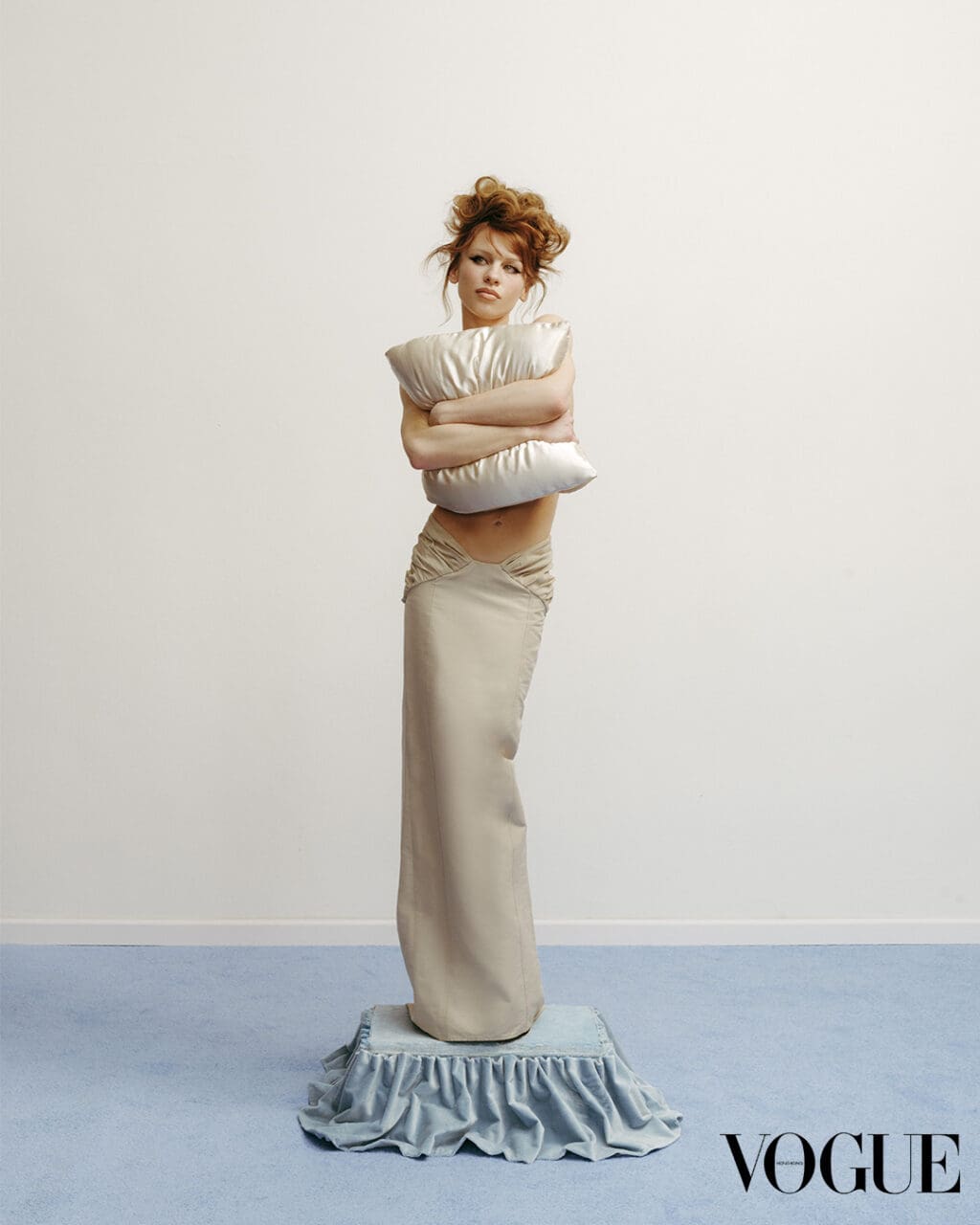As the fashion industry reckons with its enormous environmental impact — responsible for around 20% of global waste water and 10% of global carbon emissions, it beats international flights and maritime shipping — environmental NGO Redress celebrates its 10th year working to inspire positive change and perfect its framework for a more circular fashion economy.
Each year, it hosts the world’s largest sustainable fashion design contest, the Redress Design Award, which brings together sustainable designers from across the globe to create either a zero-waste menswear or womenswear collection. The five finalists competing for the womenswear award in 2020 have the opportunity to create a 10-piece capsule collection for the R Collective, which is stocked on Net-a-Porter and Lane Crawford, if they win. The top menswear designer will receive mentorship from experts at VF Corporation, who create apparel, footwear and accessories for brands including Vans, The North Face and Timberland.
Ahead of the winner’s reveal in September, Vogue speaks to the 10 finalists about the need for sustainability in the fashion industry and the inspiration behind their designs.
Womenswear Finalists
Grace Lant, Hong Kong
Aesthetic: Empowering, textural, blended
Inspiration: There is a recurring theme in current global politics that continues to confuse me: the disregard of minority groups. It doesn’t matter where you look, whether it be race, religion, gender, wealth or geopolitics, minorities are always hit the hardest. Where they should be valued and respected, they are beaten. I believe that there is so much to learn from these people that mainstream society ignores and suppresses, from resourcefulness and kindness to synergy with nature. I have looked at different photographers who capture examples of minority groups, including Iain Mckell’s ‘New Gypsies,’ Ed van der Elsken’s ‘Hong Kong The Way It Was,’ and Catherine Henriette’s ‘Conte d’ete,’ and they celebrate marginalised communities crushed by the mainstream in both England and Hong Kong (my two homes). My collection was designed as an amalgamation of the aesthetics we often ignore, to elevate the narrative of invisible communities.
Sustainability: If it were not possible to create and make sustainably and ethically I would not be a fashion designer. I will only contribute to the industry if I can do it the right way. I am committed to staying natural, which means no synthetic materials are used in the making of my clothes, so that at the end of the garment’s life it is easier to recycle or biodegrade. To minimise the impact in manufacturing I locally sourced dead-stock materials, and I have created a QR code labelling system that eliminates the need for a care label (reducing waste) as well as, hopefully, educating the wearers on how the garments were made.
Wearer: I imagine the clothes giving the wearer mystical empowerment.
Laura Krause, Australia
Aesthetic: Cool, relaxed, feminine
Inspiration: At the time I was designing my collection, one of the worst bushfire seasons on record in Australia was coming to an end. My favourite thing about the Australian bush has always been the birds. Their songs and colours bring life to such a dry, dusty landscape and as I was designing this collection, their colours really stuck with me. The other area I took reference from was historical NFL uniforms from the 1950s. The whole outfit was designed with protection and utility at its core and I was really drawn to how it distorts the body yet creates the illusion of this ideal muscular physique. I combined this with the idea of bras and corsetry similarly designed to alter the shape of the female body to fit with societal ideals of beauty. I really love how the masculine and feminine elements conflict with each other.
Sustainability: Sustainability is the only path forward. All materials used in my collection were made from scrap fibres destined for landfill. In order to get the colours I wanted, I used historical natural dye methods. There are a lot of petrochemicals that go into typical fabric dyes so it was really important for me to use only those derived from plant and insect-based sources.
Wearer: I want my clothes to give people a new sense of self-identity and confidence.
Juliana Garcia Bello, Argentina
Aesthetic: House, simplicity, Argentina
Inspiration: I was inspired by my family and the objects I was surrounded by in everyday life. My collection HERENCIA was made from clothes and textiles donated by neighbours and friends, which includes two pairs of jeans, nine pieces of shirts and five pieces of tablecloth.
Sustainability: My family taught me to value the things that we own and to appreciate their existence in our lives. We have a few things around the house that we’ve repaired many times. When they are no longer in use we will repurpose them to give them a second life. For my collection, I locally sourced the materials in Arnhem, the Netherlands, where I am based. I made connections with my nearby neighbours through a mobile app, and handmade flyers with textile embroidery by my house distributed at a local supermarket. All the clothes were made from these donations. Cotton is widely used, generating compostable garments at their end of life.
Wearer: I would like the people who wear my clothes to connect with time, where they are from and their inner feelings.
Ruth Weerasinghe, Sri Lanka
Aesthetic: Long-Lasting, protective, futuristic
Inspiration: My collection SO4 Outlast is a versatile womenswear capsule collection inspired by our future, protection, and survival, designed for the modern, urban women. With the risks of pollution in air, water and land, climate change and unpredictable weather conditions, SO4 Outlast is designed to protect its wearer from possible external threats using reconstructed clothing.
Sustainability: During my early ages, I spent my holidays in the countryside in the Kurunegala district in Sri Lanka, where my grandparents lived. From rivers to lakes and paddy fields, it was another world and I loved that experience. However, as I grew up I realised that the environment was rapidly changing. The rivers were drying out, the streams did not have fish anymore and the paddy fields could not yield harvest as they did before. Meanwhile acid rain in different urban areas was reported, which made me think about the impacts of pollution on air, water and land. In my collection all materials are sourced from secondhand fabric sellers, thrift stores or industrial waste collectors and almost 90% of the trims are sourced from secondhand sellers or garment manufacturing plant excess material discarded from manufacturing plants and destined for land-fill sites or to be burnt. To extend the lifespan of a garment, I made specific areas replaceable and detachable.
Wearer: Generation Z. They are purpose-driven, tech-savvy, hyper-conscious smart spenders that look at a purchase from an investment point of view. Meanwhile they fight to overcome the past errors left behind. They stand strong and hope to make the world a better place.
Lowe Tong, China
Aesthetic: Classical, concise, sophisticated
Inspiration: I was inspired by my experience in sustainable design and the cult Japanese label Sacai’s fashion show.
Sustainability: Sustainability for me is a lifestyle that we are exploring at the moment. It is a mindset that should be applied to everything. Excessive consumption of the natural resources and over-consumption in purchasing behaviours are damaging the planet’s ecological system. As a designer, the bridge between industry and the consumer market, I want to do what I can to contribute to a better future for the world, to protect the planet that we all live on. In my collection Commemorable, I applied a wide variety of reconstruction and zero-waste techniques. I up-cycled samples and secondhand clothing, often made from renewable cellulose fibre or 100% natural fibre, using patchwork and zero-waste cutting. My garments can be worn in different ways. They are detachable, multi-functional and can be easily altered into different silhouettes, adding light and fun to a sustainable garment while extending its life-cycle.
Wearer: Everyday people, as sustainable fashion is meant to be designed for everyone in real life, not just for showcasing on a runway.
Menswear Finalists
Beatrice Bocconi, Italy
Aesthetic: Imprecise, de-structured, versatile
Inspiration: My biggest inspiration is what I’ve seen during my travels. I usually get inspired by different landscapes, textures and from everything on the streets: styles, colours, writings on the walls and sounds.
Sustainability: Sustainability is the key to the future of fashion: every fashion designer should consider the circularity of the design and start to apply it to their everyday work to contribute to the decreasing of all the dangerous pollution that fashion industries create. For my collection I’ve chosen to use waste materials that I had at home during the quarantine; the main material of felt and cotton canvas that I’ve been collecting during my last two years of fashion school. Details such as zippers, buttons and paddings are waste materials that I had at home or at my dad’s workplace.
Wearer: My clothes are created for everyone but in particular the young generation of boys, who I want to show can be cool, fresh and in line with modern fashion while being sustainable.
Gönül Yigit, the Netherlands
Aesthetic: Neo-nostalgic, casual and deconstructed
Inspiration: The inspiration for my Redress Design Award collection came from my family. My main inspiration for this collection was my grandfather’s classical style and approach to clothing, owning only a few key pieces in his closet that allow him to create endless combinations. Even though he doesn’t have the most expensive clothes, he takes good care of them and adds personal value to them. Because of this he is able to wear his clothes for years. It’a a beautiful example in terms of sustainability. I also found inspiration in an embroidery artwork that was hanging in my grandparents’ house – it was apparently made by my mum a long time ago. Fascinated by the crafts and the surreal look of the flowers in this work, I designed surreal flower prints for my collection.
Sustainability: In the future I want to be a part of the solution instead of the problem in the fashion industry, and use my skills for the good. My collection is made out of waste materials. I am up-cycling secondhand clothes and textiles, selected carefully for colour and quality. I add value through the use of craft techniques. By retaining a shadow of the original garment — mostly mens’ suits and shirts — I add both history and mystery to my designs.
Wearer: I think in order to wear my clothes you need a certain kind of confidence and environmental consciousness.
Marie-Eve Aubry, Canada
Aesthetic: Modern, up-cycled, high quality
Inspiration: My collection, True Gen, reflects how alarming the environmental situation weighs on the shoulders of present and future generations, in which younger people are searching for truth and authenticity. This collection is based on research and studies about Generation Z, who search for truth and understand that we cannot live the way we were taught to live anymore. For me, being a sustainable designer means being counter-cultural by questioning and contesting the linear system that is already in place. It also means being willing to approach the whole process with fresh eyes by trying new things.
Sustainability: Sustainability is a way of living, it means leaving a legacy, whether in cultural or environmental resources for the next generation. Sustainability shouldn’t be just a trend; it should be inherent to all design. I’ve designed my garments using mostly dead-stock fabrics, textile swatches, end-of-rolls, cut-and sew textiles, damaged clothing samples, and many more. I work with what’s available. Mono fibre and natural fibre content were the primary criterion while choosing the fabric for the tops and bottoms; as cotton, linen and wool. My outerwear was designed to be kept for a lifetime, so I chose material based on its durability, like nylon, that I was able to source pre-owned.
Wearer: I create clothes that are modern, season-less and high quality. I hope people will want to wear and cherish them for a long time.
Ngoc Ha Thu Le, Vietnam
Aesthetic: Eclectic, raw, radiant
Inspiration: My Redress Design Award collection takes inspiration from Japanese-style Americana and aims to offer “greener” versions of classic menswear items (Levi’s trucker jackets, Dickies painter’s trousers). It shares the attitude of fashion archivists to treasure each garment, appreciate the craftsmanship, to view it as an artefact of its age, and feel a sense of community and connection. The underlying philosophy is “Good things take time” and “Doing less, but better”.
Sustainability: Vietnam is among the world’s five biggest textile exporters and producers, and plans to switch orientation from processing to producing, by building textile mills, spinning plants, and dyeing facilities. For the sake of both our citizens and the environment, it is crucial that it doesn’t make the same mistakes that other countries have in the past, and that it proves that a sustainable apparel industry is possible. I mainly used secondhand Japanese traditional clothing, constructed from rectangle strips of fabric, thus easy to take the seams apart and repurpose the textile. Other fabric includes cut-and-sew waste from the production line of a local brand and used suit jackets donated by a friend’s mother. Using secondhand textile reduces the use of virgin resources. 60% of the textiles used are natural and biodegradable. Some fabric is plant-dyed with indigo or yam roots, which don’t require metal mordants (most of which are harmful water pollutants).
Wearer: My customers are urban, active men aged 18-35 who are aware of their impact on the environment and wish to adopt a more sustainable lifestyle, including an eco-conscious wardrobe.
Inhwa Jin, Republic of Korea
Aesthetic: Meaningful, modern, comfort
Inspiration: I was inspired by the rebellious youth and their fashion choices, such as 1940’s American Zoot suits and modern street skater style for my Redress Design Award collection.
Sustainability: I want to live an altruistic life so I was interested in ethical and sustainable fashion. I believe that the fashion industry and our consumers can make a huge difference to contribute to a more sustainable world. I reconstructed jackets and tracksuits sourced from secondhand markets as well as up-cycled surplus industry fabrics through a variety of techniques including printing, embroidery, and weaving, to create a modern collection with durability and comfort at its core.
Wearer: I hope my consumers can become aware of the urgency to take immediate action towards climate change when wearing my collection.
Editor
Emma RussellCredit
Lead image: Redress photography: Karl Lam; Styling: Kieran Ho















